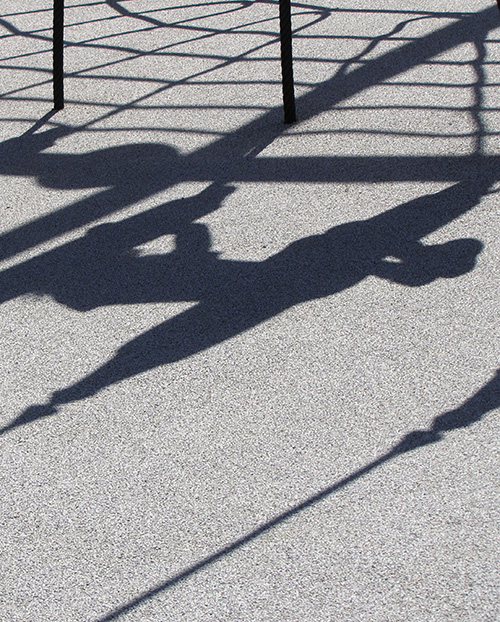 A half dozen officers gathered to swap stories in the tent that housed the one hundred or so military personnel headed to Bagram Air Field, Afghanistan. The six of us had met just forty-eight hours earlier outside the gate area at Baltimore Washington International—our country’s main portal to violence. Our only apparent bonds were our uniforms and our destination.
A half dozen officers gathered to swap stories in the tent that housed the one hundred or so military personnel headed to Bagram Air Field, Afghanistan. The six of us had met just forty-eight hours earlier outside the gate area at Baltimore Washington International—our country’s main portal to violence. Our only apparent bonds were our uniforms and our destination.
An Air Force major talked about how the military had been good to him: paid for his undergraduate degree and his medical school. He was about half way through paying back the fifteen years he owes “Big Blue” for making him an anesthesiologist.
An F-16 pilot then told of how his wife had severe complications late in her pregnancy, complications that required an emergency Caesarian. He said there’s nothing like a neonatal ICU doing superhuman feats—on a human you’ve never met, no less—to make you appreciate the miracles of modern medicine.
I told the story of my son, at the time thirteen years old, who had taken his three-meter traction kite made of nylon sailcloth out to fly on a blustery Colorado afternoon. Witnesses later told me a wind gust took my son some thirty feet into the air. Just as suddenly, the gust fell out, the kite’s lightweight canopy collapsed, and my son dropped from the sky like a stone. He suffered a fractured left eye socket, a bilateral fracture of the nose, cracked ribs, a bruised lung, and a broken ankle. He was also severely concussed, with what the neurosurgeon said was a subarachnoid hemorrhage. “In other words,” the doctor informed me, “your son’s brain is bleeding.” The doctor hastened to another room.
I blinked through tears and stared down at my unconscious, battered boy on the emergency room table. I asked one of the nurses why my son’s biceps and forearms were discolored. She told me it was likely due to tendon and ligament damage when the kite, literally, nearly pulled his arms from their sockets.
I paused. There was silence among my listeners. Top that story. Mine was better than that of the guy who’d married, divorced, and married the same woman. Better than the one from the older guy, a reservist, whose kid dropped out of Iowa State and joined the Army after Pops got wise to the fact that Junior was majoring in Smirnoff. Better, I think, than that of the guy who lost his beachfront home in Gulfport, Mississippi, to Katrina and got a whopping thirty-eight hundred dollar check from FEMA because he never got around to adding flood and wind riders to his homeowner’s policy.
“How’s your boy now?” the doctor asked.
“Full recovery.” I explained that over the course of several months I watched my son progress from infancy to childhood to adolescence as his brain and body healed. My audience sat with their mouths agape, shaking their heads. “Miraculous, really,” I concluded.
The pilot eventually broke the silence. “Your kid still fly that kite?”
“You bet.” I was surprised by the speed, candor, and certainty of my answer. God knows how many people who’ve heard this story prior to this particular telling believe that kite wound up in the trashcan, or ceremonially burned, or sold on eBay or Craigslist. Finally comin’ clean, en route to war.
It was on my mind, after all—my destination. A place that’s been the final, violent stop for nearly fifteen-hundred Americans, and countless others dating back to antiquity. A place so dangerous, our government tells us, that we’re entitled to tax-free wages and bonus “hostile fire” and “imminent danger” pay as recompense.
Or maybe it was my inquisitor, who himself defies danger—and tempts the laws of physics and good, common sense—every time he closes the canopy of his single seat, single engine, high performance fighter aircraft.
My short answer hung in the air for some time, as if the pilot was gauging its veracity.
“Good,” he said, finally. “Good for him.”
—
David J Lawrence deployed to Kandahar, Afghanistan from 2010-2011. He is delighted to be back in the classroom, doing the holy work of discussing great books with wonderful and engaging cadets at the US Air Force Academy. His essays have been published in War, Literature, and the Arts, The Santa Barbara Independent, and Proud to Be: Writing by American Warriors. And if you attended the 2013 Cannes Film Festival (lucky you), you may have heard his voice on the Fanta soft drinks commercials airing before film screenings. He lives in Colorado and Santa Barbara, California.

3 comments
Jesse says:
May 16, 2013
What a haunting and beautiful piece! Lawrence’s essay uncovers some incredible emotional depth (family, mortality, war) with knockout imagery (kite-fighter jet, etc.)…and what I really love is the power of narrative, both authorial and character driven. Even on the way to war, the odd competition of narrative, the framing of personal hardship as simultaneous camaraderie, healing, and trust. This is a piece worth sharing!
Daphne says:
May 16, 2013
… A salty fluid of protein, water, mucus and oil is released from the lacrimal gland in the upper, outer region of your eye. This fluid, better known as tears, then flows down the surface of your eye, across your face, and smears your mascara. Which is what happened when I read your piece. Damn those laws of physics …
On “The Laws of Physics” | BREVITY's Nonfiction Blog says:
Jun 5, 2013
[…] David J. Lawrence discusses the origins of his essay The Laws of Physics and Good Common Sense: […]